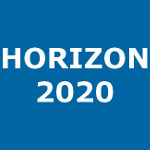CAR-T cells are more affected than T lymphocytes by mechanical constraints: A microfluidic-based approach
Zhang-Zhou, Jack (Universidad de Zaragoza) ; Movilla Meno, Nieves ; Oñate Salafranca, Carmen ; Gomez-Benito, Maria Jose (Universidad de Zaragoza) ; Guerrero, Pedro Enrique (Universidad de Zaragoza) ; Pardo Jimeno, Julian (Universidad de Zaragoza) ; García-Aznar, Jose Manuel (Universidad de Zaragoza)
Resumen: Aims: CAR-T cell therapy has attracted considerable attention in recent years owing to its well-known efficacy against haematopoietic malignancies. Nevertheless, this immunotherapy fails against solid tumours due to hostile conditions found in the tumour microenvironment. In this context, many relevant biochemical factors have been thoroughly studied, but crucial mechanical cues have been underestimated. Main methods: We developed an innovative approach using microfluidic devices, which recreate the biomechanical aspects of solid tumours. Using these platforms, we quantified immune cell migration (T and CAR-T cells) under different confinement conditions.
Key findings: We found that both CAR-T cell and T cell velocities are affected by the biomechanical and chemical cues studied, which are closely related to those found in solid tumours. Under biochemical stimulus-free conditions, the velocity of T cells is independent of the width of the microchannel, whereas the velocity of CAR-T cells is greatly reduced in the highest confinement channels. When chemoattractants or tumour cells are added, immune cells display increased confined migration velocity. However, in the presence of immunosuppressive chemokines, T cells become slower, whereas CAR-T cells significantly increase their velocity via a chimeric cytokine receptor. Significance: Our approach contributes to a better understanding of immune cell migration and the influence of mechanical constraints, which will allow the testing of new ways to improve CAR-T cell trafficking into solid tumours. Therefore, our study revealed that the migratory behaviour of CAR-T cells differs from that of T cells under confined conditions and that biomechanical cues, such as cell deformability caused by confinement, can influence the correct infiltration of immune cells into solid tumours during the immune response.
Idioma: Inglés
DOI: 10.1016/j.lfs.2024.123335
Año: 2024
Publicado en: LIFE SCIENCES 363 (2024), 123335 [12 pp.]
ISSN: 0024-3205
Factor impacto JCR: 5.1 (2024)
Categ. JCR: PHARMACOLOGY & PHARMACY rank: 44 / 352 = 0.125 (2024) - Q1 - T1
Categ. JCR: MEDICINE, RESEARCH & EXPERIMENTAL rank: 44 / 195 = 0.226 (2024) - Q1 - T1
Factor impacto SCIMAGO: 1.315 - Biochemistry, Genetics and Molecular Biology (miscellaneous) (Q1) - Pharmacology, Toxicology and Pharmaceutics (miscellaneous) (Q1) - Medicine (miscellaneous) (Q1)
Financiación: info:eu-repo/grantAgreement/ES/AEI/FJC2021-048046-I
Financiación: info:eu-repo/grantAgreement/EC/H2020/101018587/EU/Individual and Collective Migration of the Immune Cellular System/ICoMICS
Financiación: info:eu-repo/grantAgreement/ES/MEFP/FPU21/06003
Financiación: info:eu-repo/grantAgreement/ES/MICINN/PTA2020-018510-I/AEI/10.13039/501100011033
Tipo y forma: Artículo (Versión definitiva)
Área (Departamento): Área Inmunología (Dpto. Microb.Ped.Radio.Sal.Pú.)
Área (Departamento): Área Bioquímica y Biolog.Mole. (Dpto. Bioq.Biolog.Mol. Celular)
Área (Departamento): Área Mec.Med.Cont. y Teor.Est. (Dpto. Ingeniería Mecánica)
 Debe reconocer adecuadamente la autoría, proporcionar un enlace a la licencia e indicar si se han realizado cambios. Puede hacerlo de cualquier manera razonable, pero no de una manera que sugiera que tiene el apoyo del licenciador o lo recibe por el uso que hace. No puede utilizar el material para una finalidad comercial. Si remezcla, transforma o crea a partir del material, no puede difundir el material modificado.
Debe reconocer adecuadamente la autoría, proporcionar un enlace a la licencia e indicar si se han realizado cambios. Puede hacerlo de cualquier manera razonable, pero no de una manera que sugiera que tiene el apoyo del licenciador o lo recibe por el uso que hace. No puede utilizar el material para una finalidad comercial. Si remezcla, transforma o crea a partir del material, no puede difundir el material modificado.
Exportado de SIDERAL (2025-10-17-14:33:55)
Visitas y descargas
Key findings: We found that both CAR-T cell and T cell velocities are affected by the biomechanical and chemical cues studied, which are closely related to those found in solid tumours. Under biochemical stimulus-free conditions, the velocity of T cells is independent of the width of the microchannel, whereas the velocity of CAR-T cells is greatly reduced in the highest confinement channels. When chemoattractants or tumour cells are added, immune cells display increased confined migration velocity. However, in the presence of immunosuppressive chemokines, T cells become slower, whereas CAR-T cells significantly increase their velocity via a chimeric cytokine receptor. Significance: Our approach contributes to a better understanding of immune cell migration and the influence of mechanical constraints, which will allow the testing of new ways to improve CAR-T cell trafficking into solid tumours. Therefore, our study revealed that the migratory behaviour of CAR-T cells differs from that of T cells under confined conditions and that biomechanical cues, such as cell deformability caused by confinement, can influence the correct infiltration of immune cells into solid tumours during the immune response.
Idioma: Inglés
DOI: 10.1016/j.lfs.2024.123335
Año: 2024
Publicado en: LIFE SCIENCES 363 (2024), 123335 [12 pp.]
ISSN: 0024-3205
Factor impacto JCR: 5.1 (2024)
Categ. JCR: PHARMACOLOGY & PHARMACY rank: 44 / 352 = 0.125 (2024) - Q1 - T1
Categ. JCR: MEDICINE, RESEARCH & EXPERIMENTAL rank: 44 / 195 = 0.226 (2024) - Q1 - T1
Factor impacto SCIMAGO: 1.315 - Biochemistry, Genetics and Molecular Biology (miscellaneous) (Q1) - Pharmacology, Toxicology and Pharmaceutics (miscellaneous) (Q1) - Medicine (miscellaneous) (Q1)
Financiación: info:eu-repo/grantAgreement/ES/AEI/FJC2021-048046-I
Financiación: info:eu-repo/grantAgreement/EC/H2020/101018587/EU/Individual and Collective Migration of the Immune Cellular System/ICoMICS
Financiación: info:eu-repo/grantAgreement/ES/MEFP/FPU21/06003
Financiación: info:eu-repo/grantAgreement/ES/MICINN/PTA2020-018510-I/AEI/10.13039/501100011033
Tipo y forma: Artículo (Versión definitiva)
Área (Departamento): Área Inmunología (Dpto. Microb.Ped.Radio.Sal.Pú.)
Área (Departamento): Área Bioquímica y Biolog.Mole. (Dpto. Bioq.Biolog.Mol. Celular)
Área (Departamento): Área Mec.Med.Cont. y Teor.Est. (Dpto. Ingeniería Mecánica)
Exportado de SIDERAL (2025-10-17-14:33:55)
Enlace permanente:
Visitas y descargas
Este artículo se encuentra en las siguientes colecciones:
Artículos > Artículos por área > Mec. de Medios Contínuos y Teor. de Estructuras
Artículos > Artículos por área > Bioquímica y Biología Molecular
Artículos > Artículos por área > Inmunología
Registro creado el 2025-01-24, última modificación el 2025-10-17
